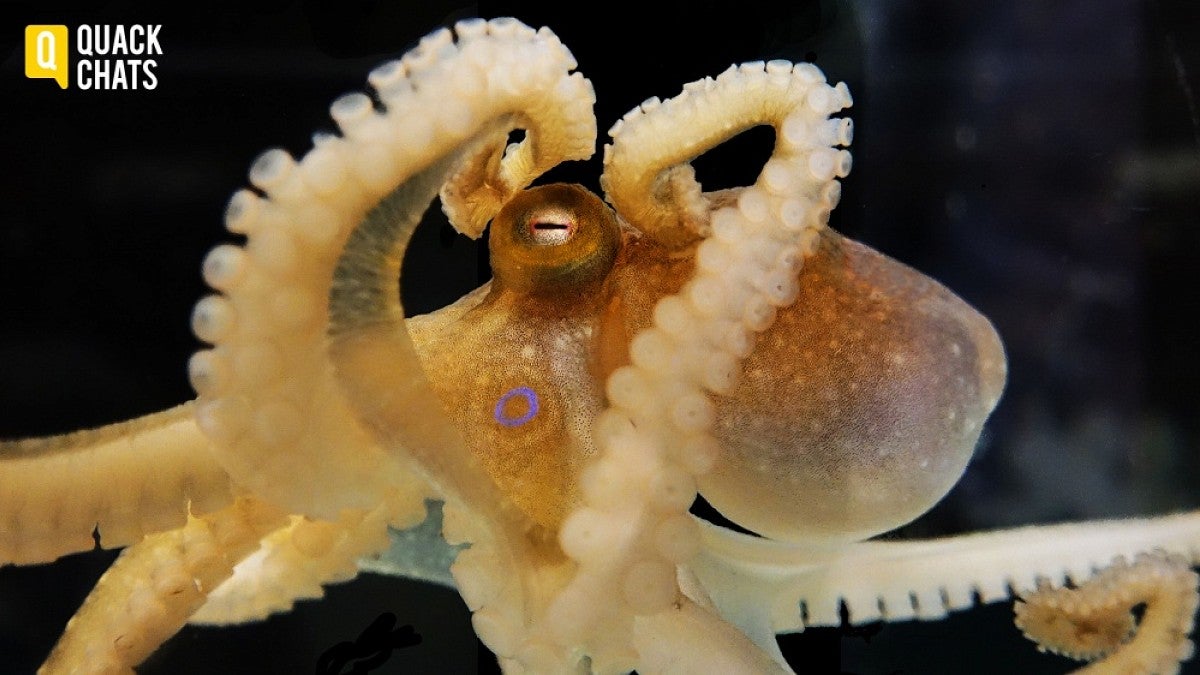While it may not be a window to the soul, the visual system of an eight-armed marine animal might tell us more about the human brain than you think.
That’s one of the ideas University of Oregon neuroscientist Cristopher Niell will address in his Dec. 11 Quack Chats pub talk, “Of Mice and Octopuses: Understanding How Our Brains Work by Studying Animal Vision.” The talk begins at 6 p.m. at the Ax Billy Grill at the Downtown Athletic Club, 999 Willamette St., in Eugene.
Niell, a professor in the Department of Biology and the Institute of Neuroscience, studies how animals see, in order to better understand how human brains allow people to interact with the world. In his talk, he will discuss some of the takeaways from his research involving mice, octopuses and zebrafish.
“We look at the mouse because its brain is similar to our brain in many ways but simple enough that we can study them,” Niell said. “The octopus is the opposite. It’s more about looking at how does a different type of brain work.”
Although many of the questions being answered by research on the visual systems of octopuses are more fundamental, research involving mice can help shed light on a whole host of different real-world issues, including brain development, autism and attentiveness of children in school.
Niell points to research recently published in the journal Current Biology looking at how mice catch crickets, which can be divided into two phases. In phase one, the mouse realizes the cricket is present. In the second phase, the mouse turns toward the cricket and sets its sights on getting to the cricket.
“Those actions that the mouse carries out roughly correspond to paying attention in humans,” Niell explains. “When kids are in class and a teacher says ‘Everybody listen up’ the first thing kids do is they look up and then they look over to the teacher. These are known as the alerting and the orienting phases.”
In his talk, Niell will explore some of the ways that neuroscientists are able to study the types of cells in the brain that are involved in various processes, including techniques that allow researchers to “turn on” and “turn off” neurons in the brains of mice.
By examining the different ways that vision can work in different animals, Niell said, scientists can learn more about the human brain. For example, photo receptors in the human eye respond to darkness instead of light, but in octopuses, it’s the opposite.
“Octopuses do some things much more directly,” Niell said. “Their eye is wired up more in the way an eye would work logically, whereas ours has some things that are illogical about it.”
Niell recently received a prestigious grant from the Human Frontiers Science Program to study vision in the octopus and how the octopus brain stores images that it sees as long-term memories.
“Octopuses have amazing vision,” Niell said. “But their brain looks nothing like ours. How do they do this?”
—By Lewis Taylor, University Communications


